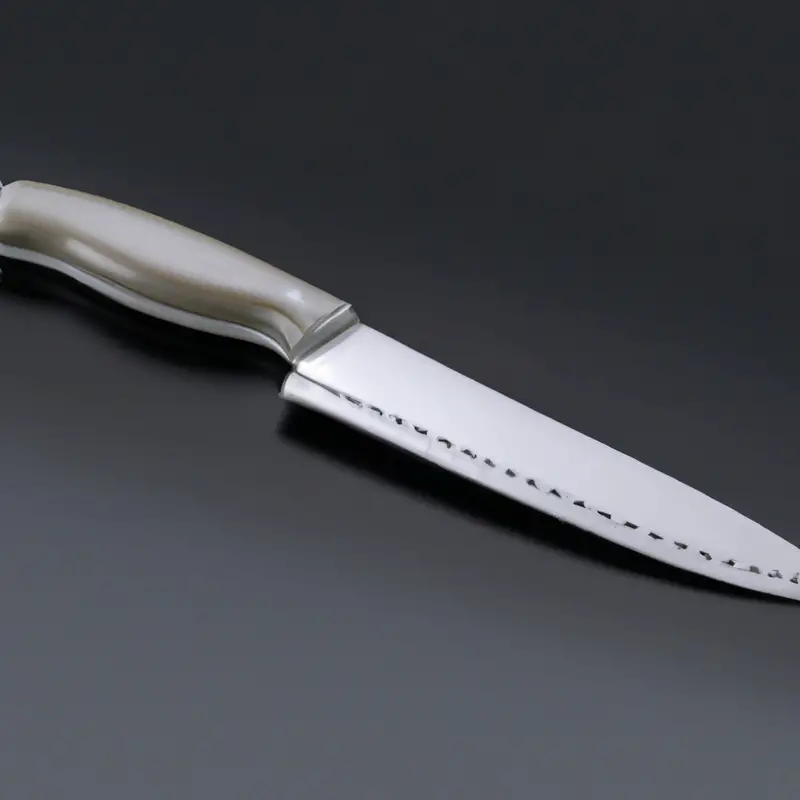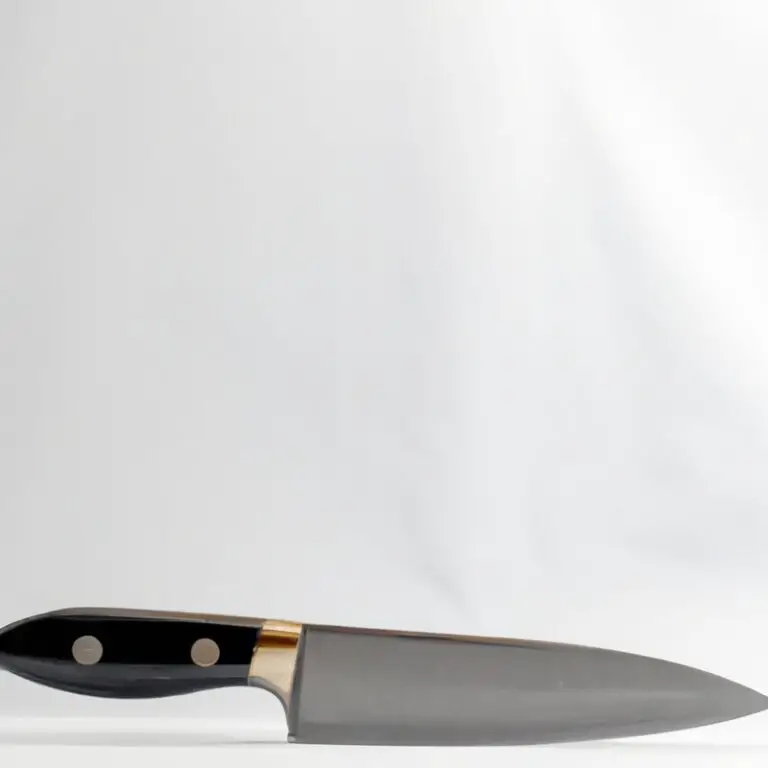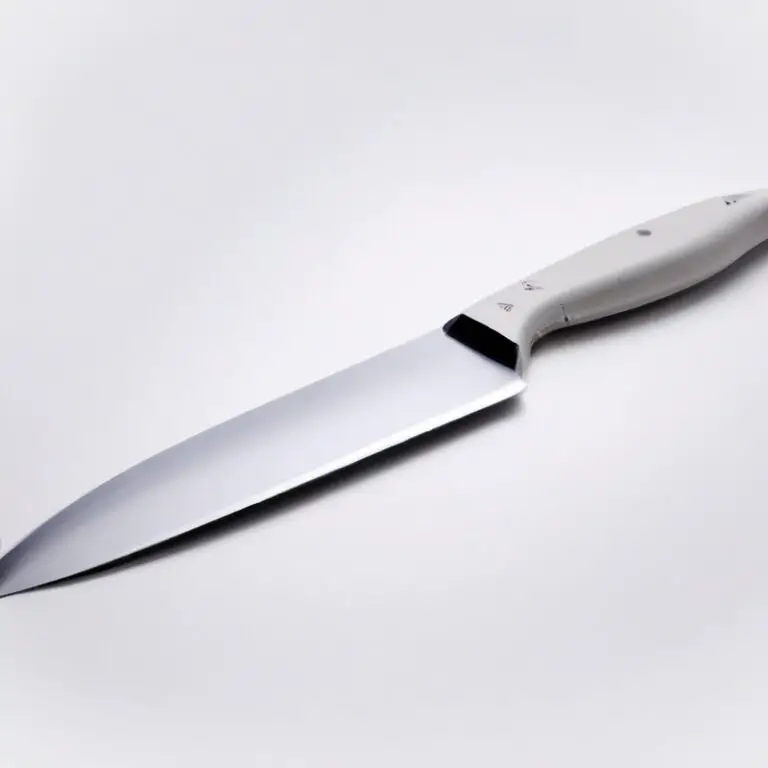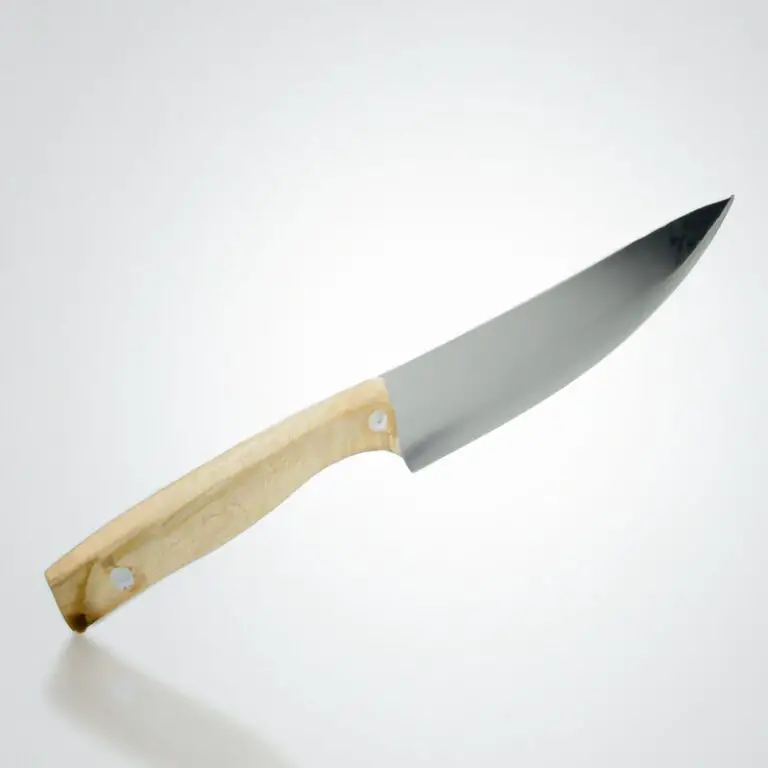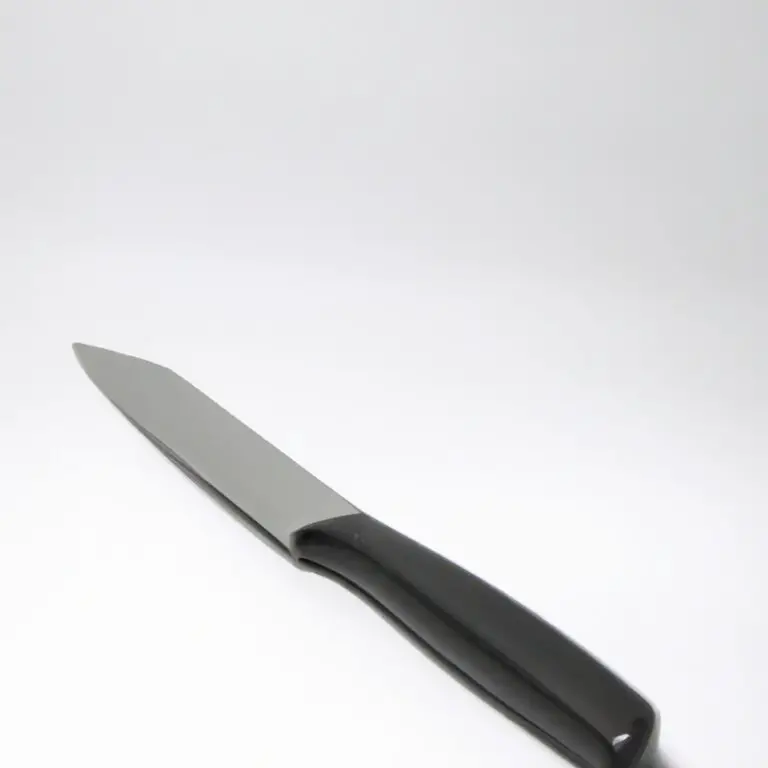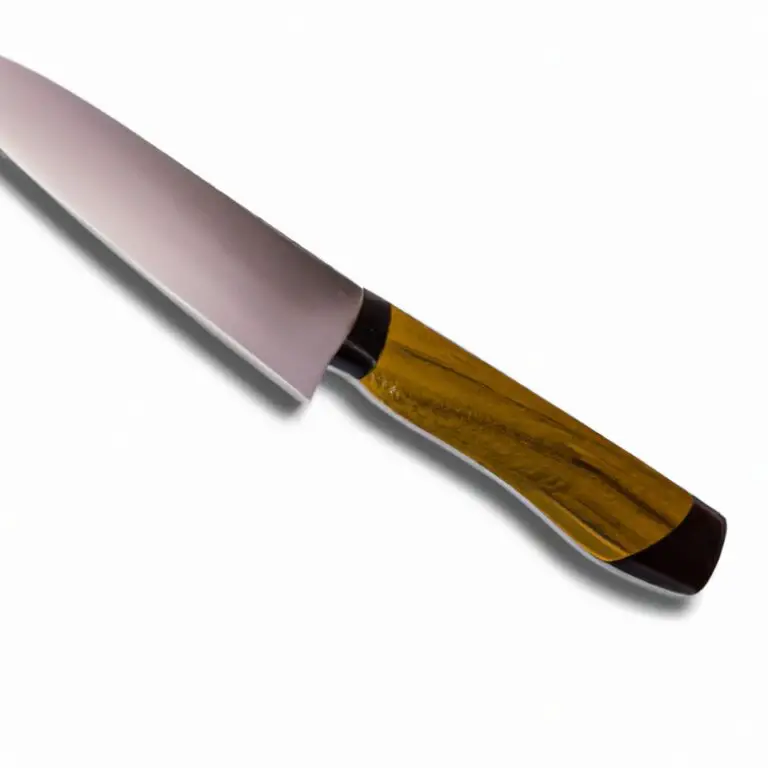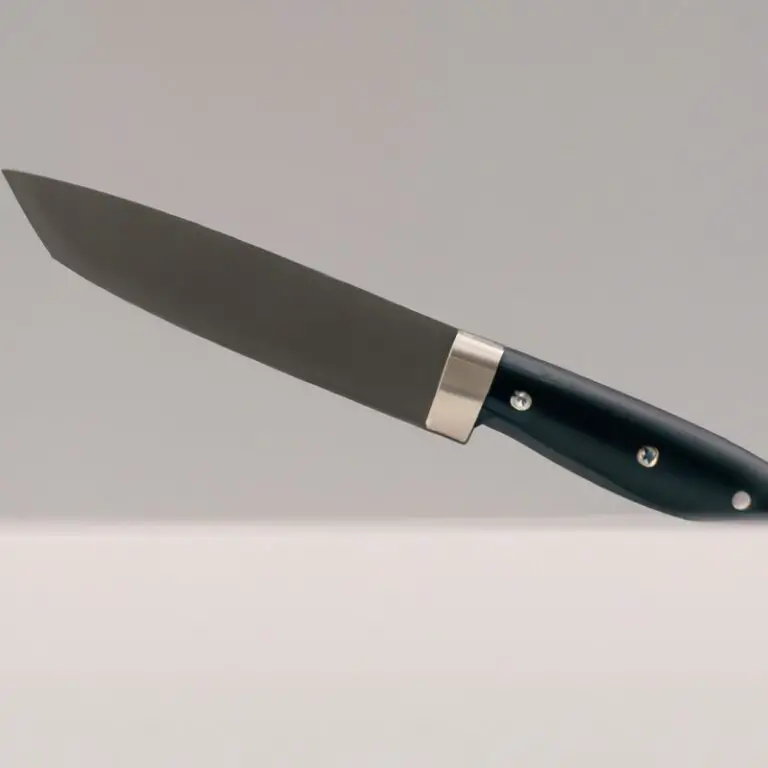What Is The Best Way To Grip a Chef Knife For Stability? Tips
Key Takeaways:
- Gripping a chef knife correctly is crucial for stability and precision in cutting.
- The pinch grip, which involves gripping the blade between the thumb and index finger, is the preferred grip for most chefs.
- Use your other fingers to wrap around the handle for added support and control.
- Regular practice and finding what works best for you are key to improving your grip and overall knife skills.
As a culinary artist, one of the most important skills to master is the art of knife work. From chopping to slicing, a chef knife is a chef’s best friend in the kitchen.
However, the key to effective and safe knife work lies in your grip technique.
In this article, we’ll deep-dive into the best ways to grip a chef knife to ensure stability, efficiency, and safety. We’ll explore different handle types, blade shapes, thumb and index finger positioning, and maintenance tips to perfect your technique.
Let’s sharpen those skills and get started!
| Grip Type | Description |
|---|---|
| Pinch Grip | The thumb and index finger pinch the blade just above the handle while the remaining three fingers grip the handle. |
| Full Grip | All five fingers wrap around the handle of the knife for maximum control and pressure. |
| Hybrid Grip | A combination of the pinch and full grip, with the thumb and index finger pinching the blade and the remaining fingers wrapped around the handle. |
Understanding the importance of grip in culinary arts
The grip is one of the essential aspects of using a chef knife. A proper grip is crucial to ensure stability and control during food preparation tasks.
Without a stable grip, it can become challenging to cut ingredients uniformly, and accidents may occur.
A good grip involves mastering the pinch grip, which involves using the thumb, index finger, and middle finger to hold the knife handle securely. It is essential to adjust the grip according to the task at hand and maintain the blade and handle to ensure a stable grip.
Improving grip strength and avoiding common grip mistakes are also crucial for safe and effective knife technique.
Analyzing different types of chef knife handles and their grip features
Different types of chef knife handles offer various grip features to enhance stability and improve performance. For instance, wooden handles are ergonomic and provide a comfortable grip, while plastic handles offer a non-slip feature that makes them ideal for wet conditions.
Some knives have a full-tang handle that extends through the entire length of the knife, giving it better balance and control when chopping.
Japanese knives typically have octagonal or D-shaped handles that fit comfortably in the hand and provide a secure grip, while Western-style knives have rounded or contoured handles that cater to people with larger hands. It’s essential to select a chef knife with a handle that feels comfortable and natural in your hand to avoid hand fatigue and slippage.
Additionally, it’s important to note that the handle shape will affect your cutting technique.
A straight handle is ideal for vertical chopping motions, while a curved handle is best for rocking motions and slicing through ingredients evenly. An ergonomic handle provides better comfort and balance, allowing for a smooth, effortless, and stable cutting action.
Ultimately, the type of handle you choose depends on your personal preference and the task at hand.
A handle that offers a comfortable and secure grip will enable you to maintain stability and control over the knife. Having good control over your knife will lead to a more efficient and safer performance.
The impact of blade shape on grip technique and stability
The blade shape of a chef knife can greatly impact grip technique and stability. A wider blade, for example, provides more stability when cutting through denser foods like winter squash.
A narrower blade is suitable for precision tasks like peeling.
The curve of the blade can also affect grip. A curved blade requires a rocking motion, while a straight blade is better suited for a chopping motion.
The weight distribution of the blade also influences grip, as a blade that is heavier at the handle may require a grip closer to the bolster to maintain balance.
It is important to consider these factors when selecting a blade shape to ensure a secure and comfortable grip during use.
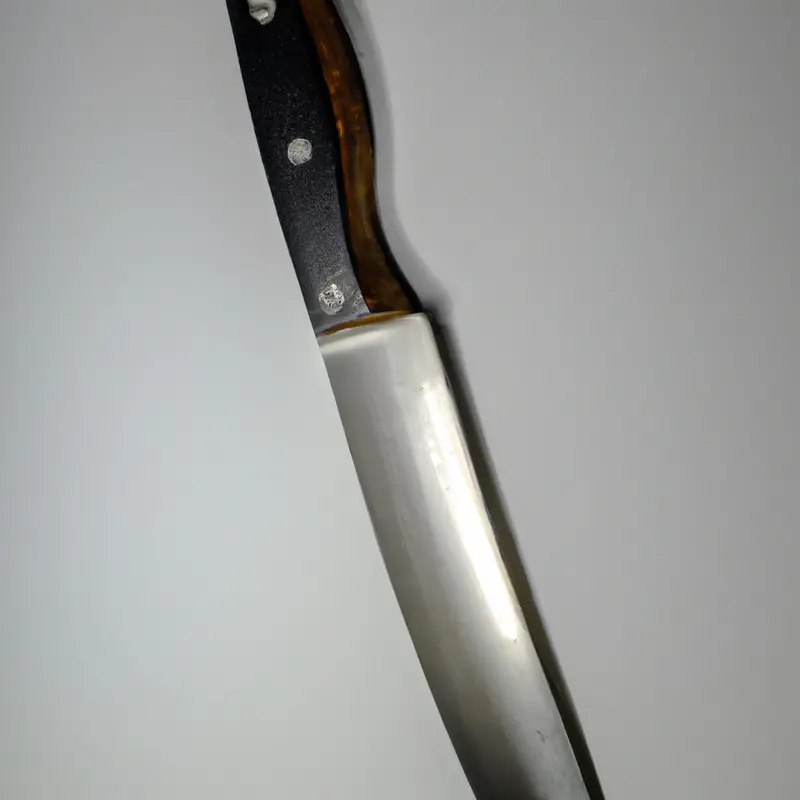
Mastering the pinch grip: the basics and advantages
The pinch grip is the most common and effective way to grip a chef knife for stability. It involves pinching the blade’s spine between the thumb and index finger at the base of the blade, while wrapping the remaining three fingers around the handle.
The advantages of mastering this grip are precision, control, and decreased hand fatigue.
With the pinch grip, you can easily control the blade’s movement as it extends past your fingertips, giving you the ability to manipulate the blade with accuracy. This grip also reduces hand fatigue by distributing the weight of the blade evenly across the hand, allowing you to work for longer periods without experiencing muscle strain.
To master the pinch grip, practice holding your knife using this technique and begin with slow and precise cuts.
As your confidence grows, increase the speed and complexity of your cuts while maintaining a firm grip on the blade.
Alternative grips for different tasks: which is right for you?
The pinch grip is the most widely used grip for a chef knife. However, it may not always be the best option for every task.
Alternative grips, such as the handle grip and the blade grip, can come in handy for specific tasks.
For delicate tasks, such as peeling and trimming, the handle grip gives more precision and control. This grip involves holding the handle with the thumb and index finger while resting the other fingers on the surface of the food.
The blade grip, on the other hand, is better for heavier and tougher foods like melons or large beef cuts.
This grip involves holding the blade with the thumb and index finger while wrapping the other fingers around the handle. To know which grip is best for different tasks, it’s essential to practice and experiment.
Start by trying out different grips on various foods and find the one that works best for you.
It’s worth noting that your grip may also vary depending on the size, shape, and weight of your knife. Always use a grip that gives you the most comfort, control, and stability for a safer and more effective knife technique.
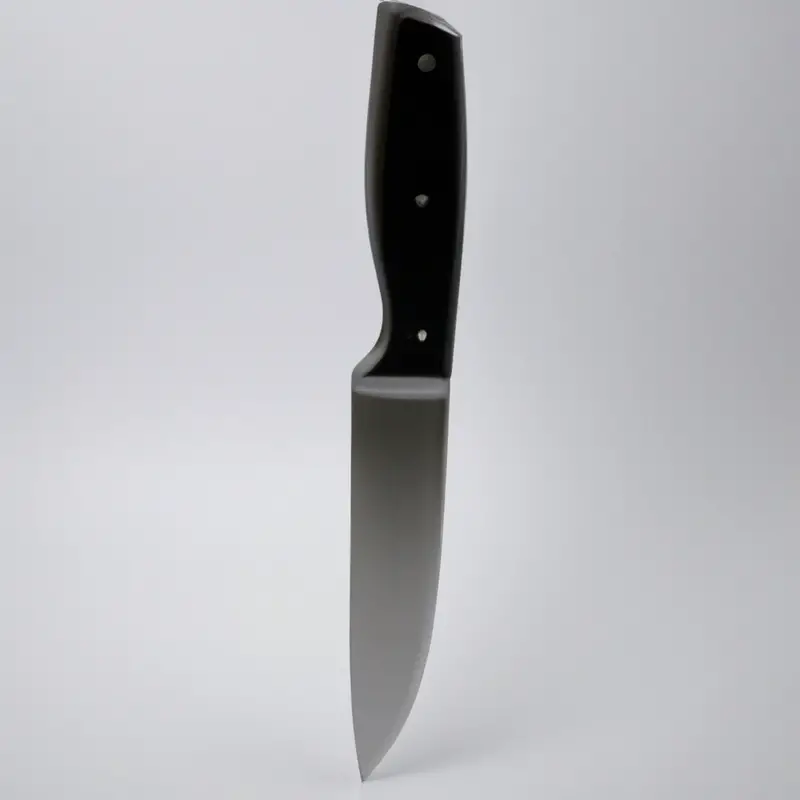
The role of the thumb and index finger in gripping a chef knife
The thumb and index finger are the primary fingers responsible for grip strength and stability when using a chef knife. This technique is also known as the pinch grip and involves holding the knife handle with the base of the index finger and the top of the thumb.
The thumb provides the support required to prevent the knife from slipping out of your hand during use, while the index finger guides the blade with precision.
This grip forces the blade into your hand’s fleshy part, reducing the potential for slips, and makes your grip more secure. Additionally, this technique offers more control, allowing for precise cuts.
It takes time to master the pinch grip, but with practice, you can reduce hand fatigue and increase the accuracy of your cuts.
Knife handle and blade maintenance to ensure a stable grip
To ensure a stable grip, it’s important to properly maintain both the knife handle and blade. A damaged or dirty handle can cause slips, while a dull or dirty blade can make it harder to maintain control.
Here are some tips for maintaining your knife handle and blade:
- Clean the handle regularly with warm water and soap.
- Dry the handle completely to prevent any moisture buildup.
- Check for any cracks or damage to the handle and replace if necessary.
- Sharpen the blade regularly to ensure a clean and precise cut.
- Clean the blade after each use and dry completely to prevent rust.
- Use a honing rod to straighten the blade and maintain its edge.
- Check for any nicks or chips on the blade and have it professionally repaired if necessary.
By taking care of your knife handle and blade, you can ensure a stable grip and more effective cutting technique.
How to adjust your grip for different fruits and vegetables
Adjusting your grip when cutting different fruits and vegetables is critical to avoid injury and achieve clean cuts. For smaller and softer fruits such as strawberries or tomatoes, use a delicate grip with your fingertips and avoid putting too much pressure on the knife.
For larger and harder fruits such as watermelon or pumpkin, a full grip on the handle with your thumb and fingers wrapped around it is recommended.
When cutting round fruits like oranges or onions, use a claw grip where your fingers are curled and fingertips tucked in to guide the knife and protect your fingers. Always keep your grip firm but not too tight to avoid slipping or losing control of the knife.
By adjusting your grip based on the produce you’re cutting, you’ll improve your precision and efficiency in the kitchen.
Tips and tricks for improving your grip strength and endurance
Improving your grip strength and endurance can greatly enhance your stability when using a chef knife. Here are some tips and tricks to help you achieve this:
- Exercise regularly – gripping exercises and workouts that focus on your forearm, wrist, and hand muscles can help increase your grip strength and endurance.
- Correct your posture – maintaining good posture when holding a chef knife can alleviate stress and tension in your muscles, leading to better grip strength.
- Use proper grip techniques – mastering the pinch grip and ensuring your thumb and index finger are correctly placed on the knife handle can make a big difference in stability.
- Hold the knife closer to the blade – this can increase your control over the knife and make it easier to chop and slice with precision.
- Avoid over-gripping – gripping the knife too tightly will fatigue your muscles faster and make it difficult to achieve stability.
By applying these tips and tricks, you can improve your grip strength and endurance, making it easier to handle a chef knife with stability and precision.
Common grip mistakes to avoid for a safer and more effective knife technique
Common grip mistakes can lead to accidents in the kitchen and jeopardize your safety. Here are some common grip mistakes you should avoid to ensure a safe and effective knife technique:
- Gripping the handle too tightly: Holding the knife too tightly can cause unnecessary strain and discomfort in your hand, leading to fatigue, reduced control, and an increased risk of accidents.
- Using the wrong grip for the task: Different tasks require different grips. For instance, the pinch grip is ideal for precision tasks like mincing herbs and vegetables, while the hammer grip is better suited for tougher tasks like chopping meat.
- Holding the knife too close to the blade: Placing your fingers too close to the blade increases the risk of accidentally cutting yourself, especially when performing slicing motions.
- Failing to properly align your fingers: Gripping the knife with improperly aligned fingers can lead to limited control and precision, increasing the risk of an accident.
- Neglecting to maintain a consistent grip: Consistent grip ensures steady control, improved precision, and reduced risk of injury. Maintaining a consistent grip is essential when performing repetitive tasks.
By avoiding these common grip mistakes, you can enjoy a safer and more effective knife technique in the kitchen.
Final Verdict
Mastering the proper grip technique is crucial for anyone looking to elevate their culinary skills. With the many types of chef knife handles and blade shapes available, it’s important to understand the impact they have on grip stability.
The pinch grip is a fundamental grip that every chef should master, but experimenting with alternative grips can provide advantages for specific tasks.
Proper maintenance and adjustment of your grip can make a significant difference in your ability to handle different fruits and vegetables. Improving your grip strength and avoiding common mistakes can also lead to safer and more effective knife technique.
By implementing these tips and tricks, you can become more confident and skilled in the kitchen, impressing your diners with a delicious and perfectly cut dish.
Remember to prioritize safety and practice regularly to achieve mastery.

